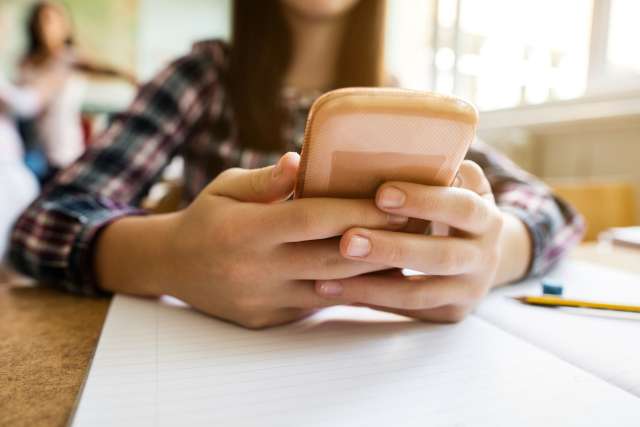As students begin a new school year, school district officials across California are considering or establishing cellphone-use restrictions on campus. Their reasoning? Increased screen time, along with prolonged social media use, may disrupt the learning environment, stunt social development and harm students’ mental health, they say.
, a child and adolescent psychologist and professor at UCLA Health, agrees that removing cellphones from the classroom may have a positive influence.
“There are more harms associated with cellphone use in school than the benefits,” says Dr. Piacentini, who is also a father of three.
With 83.9% of adolescents ages 16-19 having a cell phone, as reported by the the health effects of cellphones on children are becoming more apparent.
Decreased attention span
Research from the reveals that children ages 8-12 in the United States spend approximately six hours per day on screens, and this screen time often extends into the classroom.
“We know that a lot of kids are spending time on their phone during class or during recess,” says Dr. Piacentini. As a result, students are likely to face difficulty concentrating or limiting distractions in school, he says.
Learn more about Child & Adolescent Psychiatry services at UCLA Health
A shorter attention span can also impact children’s abilities when it comes to problem-solving. Students who can’t concentrate “do not have the ability to take multiple perspectives or see problems from multiple approaches,” Dr. Piacentini explains.
The inability to problem-solve and an addiction to screen time means that eventually, kids’ imagination and critical thinking skills will suffer.
Boredom actually encourages creativity among children, says Dr. Piacentini.
“If kids are on their phones 24/7, it doesn’t help them develop a sense that they can create, understand and generate thoughts and ideas.”
Impacts on social development
With a growing reliance on cellphones to navigate friendships, students’ social development may also be at risk.
While technology can connect kids with each other, traditional forms of play are gradually being replaced by video games and online platforms. According to the , 95% of children ages 13-17 use social media platforms.
As a result, children might not be prepared to engage socially when they have to interact in person with others they don’t know, or participate in activities that are unfamiliar to them, according to Dr. Piacentini.
In addition, social media algorithms greatly impact the spread of misinformation and reinforce biased beliefs, explains Dr. Piacentini. For elementary students, viewing some information online can increase anxiety.
Young children often lack the capacity and context to understand certain messages, Dr. Piacentini says. As a result, they may come to believe “that the world is scary.”
Next steps for parents
So, how can parents handle cellphone restrictions at home and in school?
“Kids learn more by observing than by being told,” Dr. Piacentini advises.
It is important for parents to model healthy cellphone use habits, he says. For example, since use of electronics before bedtime can disrupt children’s sleep, parents can set aside their phones earlier after dinnertime.
Dr. Piacentini also encourages parents to find opportunities for their children to put away their phones and do non-screen activities with their peers.
When it comes to campus restrictions on phones, parents may have concerns about contacting their children during the school day, especially in an emergency. However, they should speak with teachers and administrators about communication and safety protocols for such situations.
The focus on student well-being requires schools and parents to work together, Dr. Piacentini says. “It’s about balancing the different needs of different kids.
In the end, he emphasizes the need for all parties to work together to improve children’s health, boost their confidence, and create a supportive learning environment.




